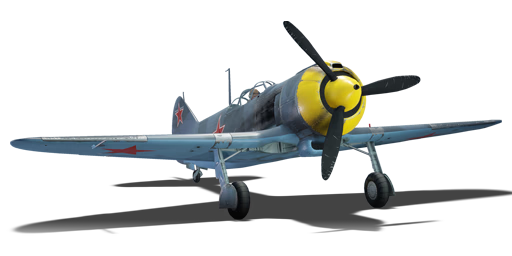



The La-5FN was a fighter produced at the same time as the La-5F, rather than being its successor, the main improvement was the introduction of a fuel-injected engine. This came in the form of the ASh-82FN engine that could produce 1,850 HP for up to 10 minutes. In combat tests against a Bf 109 G-2, the La-5FN showed superiority in speed and manoeuvrability at low and medium altitudes. These results influenced Soviet tactics. It used the same twin 20 mm ShVAK cannons as the La-5F, but with 200 rounds per gun.
This aircraft has been in the game since the start of the Open Beta Test prior to Update 1.27. Being the last La-5 modification available, one can expect a similar playstyle to the previous variants, however, turn it up several notches to 11. Sporting accurate twin 20 mm cannons and amazing low altitude performance, the La-5FN is a plane with heart that can provide some blood pumping engagements. Just as the La-5 and La-5F, it has good performance in boom and zoom tactics, however, with an improved powerplant, it is more capable than ever in low-medium altitude fights.
flaps
flaps
flaps
brake
| Belt | Belt filling | Armor penetration (mm) at a distance: | |||||
|---|---|---|---|---|---|---|---|
| 10 m | 100 m | 500 m | 1000 m | 1500 m | 2000 m | ||
| FI-T/AP-I | 28 | 24 | 14 | 7 | 4 | 2 | |
| FI-T/HEF/AP-I/FI-T | 28 | 24 | 14 | 7 | 4 | 2 | |
| HEF/FI-T/AP-I | 28 | 24 | 14 | 7 | 4 | 2 | |
| FI-T | 4 | 4 | 4 | 4 | 4 | 4 | |
| AP-I/FI-T/AP-I/AP-I | 28 | 24 | 14 | 7 | 4 | 2 | |
| AP-I/HEF/HEF/FI | 28 | 24 | 14 | 7 | 4 | 2 | |












Flight performance | |
|---|---|
Survivability |
|---|
Weaponry |
|---|